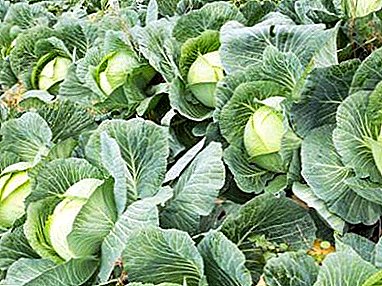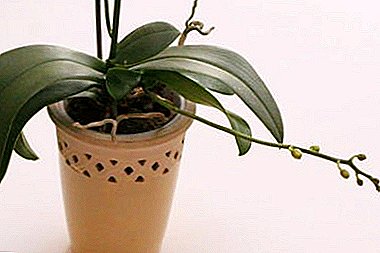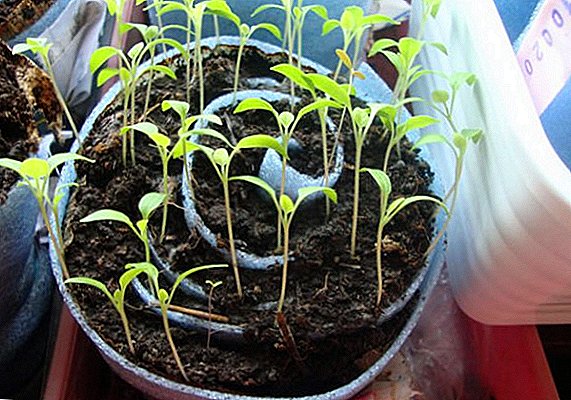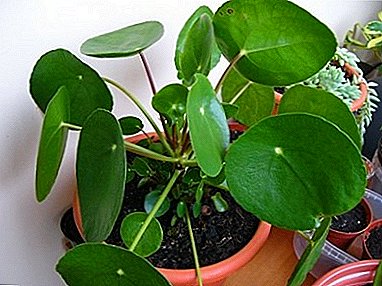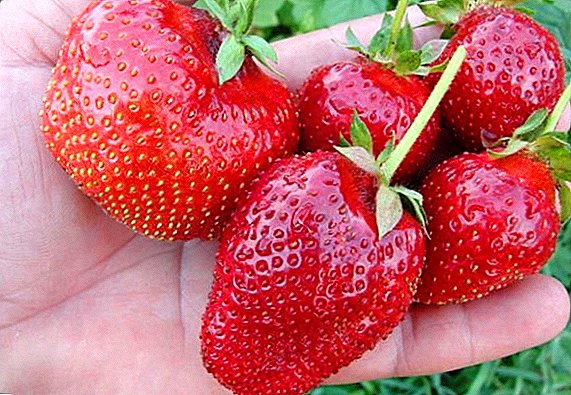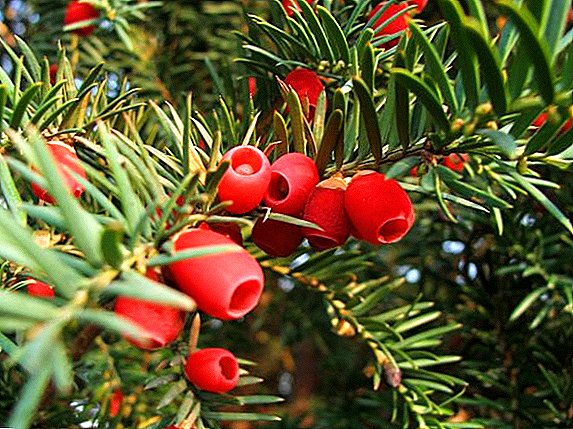 Yew - evergreen long-liver, grows slowly and is considered one of the most poisonous representatives of the flora of the south.
Yew - evergreen long-liver, grows slowly and is considered one of the most poisonous representatives of the flora of the south.
In their natural environment, trees live up to 1000 years or more.
Yew berry: description
 In botanical references, the yew berry is described as a coniferous shrub or tree, spreading and branched. The yew develops slowly, growing by only two meters in 20 years. The plant has a strong root system, which allows it to grow on any soil.
In botanical references, the yew berry is described as a coniferous shrub or tree, spreading and branched. The yew develops slowly, growing by only two meters in 20 years. The plant has a strong root system, which allows it to grow on any soil.
The crown is extended with an oval, lush, with many skeletal branches. Berry yew blooms in late April - early May. The fruits ripen in October. Represent a seed in a dense, juicy shell. The flesh of the seedling resembles pink mucus, the taste is sweet.
Important! In addition to the pulp of the seedlings, all parts of the tree - both aboveground, and the roots - are deadly poisonous!
Chemical composition of yew
The plant contains alkaloids, which are considered poison: Taxin, ephedrine and glycoside taxicantin. These elements in the yew can bring both benefit and harm. In addition to these substances present alkaloid malosein, and also vitamins E and K.
The wood, bark and leaves of the yew tree contain terpenoids, steroids, cyanogenic compounds (taxifillin), lignans, tannins, phenols and their derivatives, flavonoids, anthocyanins, higher fatty acids, higher alcohols and carbohydrates.
Did you know? About yew, as a deadly poison was known to the ancient Romans and Greeks. Julius Caesar and Pliny the Elder wrote about the therapeutic and poisonous properties of the berry yew. One of the legends of Normandy narrated about the death of monks who had fallen asleep in a room with a yew floor.
Medicinal properties and application of yew
Vegetable poisons, including yew, are used to prepare various drugs: painkillers, anesthetics, anti-inflammatory.

What is useful yew
Inside drugs based on yew must be used very carefully, the main use - externally, as lotions with gout, rheumatic pains. Tis has a beneficial effect on dermatitis, scabies and mycosis of the skin.
Features of application of yew in medicine
Homeopathic remedies based on yew help with headaches, sore throat, diseases of the digestive system, urinary system. Significantly improve the condition of patients with erysipelas, with folliculitis, pustules.
The use of yew in modern medicine
Yew berry is a raw material for drugs produced on an industrial scale. Substances released during the processing of plants, are part of the preparations "Docetaxel" and "Paclitaxel", antitumor, cytostatic agents. They are used in the treatment of cancers of the lung, intestine, male genital organs, ovaries and breast, stomach and during the passage of hormonal therapy.
How to use yew in traditional medicine
In folk medicine, yew treatment is used for skin diseases, rheumatic pains and gout. Used to relieve symptoms of bronchitis, bronchial asthma, diseases of the genitourinary system. For the treatment of diseases prepare broths, tinctures of yew berry.
Interesting! The history of the yew berry goes back centuries. The plant grew on the ground long before the dinosaurs. In ancient Egypt, yew was used in the manufacture of burial sarcophagi and was considered a symbol of mourning.
Side effects and contraindications of yew berry
 Elevated parts of the plant are dangerous to humans and animals. If swallowed, ephedrine causes heart palpitations, agitation and increased pressure.
Elevated parts of the plant are dangerous to humans and animals. If swallowed, ephedrine causes heart palpitations, agitation and increased pressure.
Symptoms of poisoning: nausea, accompanied by vomiting, weakness, drowsiness, shortness of breath. It is not recommended to use preparations of yew berry, despite its medicinal properties, without consulting a doctor, since the symptoms of yew poisoning are similar to the flu.
The danger is that not done in time gastric lavage and the intervention of doctors will lead to death.
Attention! For adults, a decoction of 50-100 needles of berry yew needles is fatal.
Yew berry: how to prepare and store medical raw materials
The yew tree, undoubtedly, has useful properties, for preparation as take medicines needles and berries of a plant. Collect raw materials in the period of maturity. Pine needles and fruits of yew are dried under a canopy, in the air, but without exposure to sunlight. Harvested yew must be kept separately from other medicines, in a glass container, in a dry, dark place.
Yew was used for a long time not only as medicine; wood plants were used in the manufacture of furniture, in shipbuilding, in underwater construction and other industries. Unfortunately, today the yew is on the verge of extinction.


